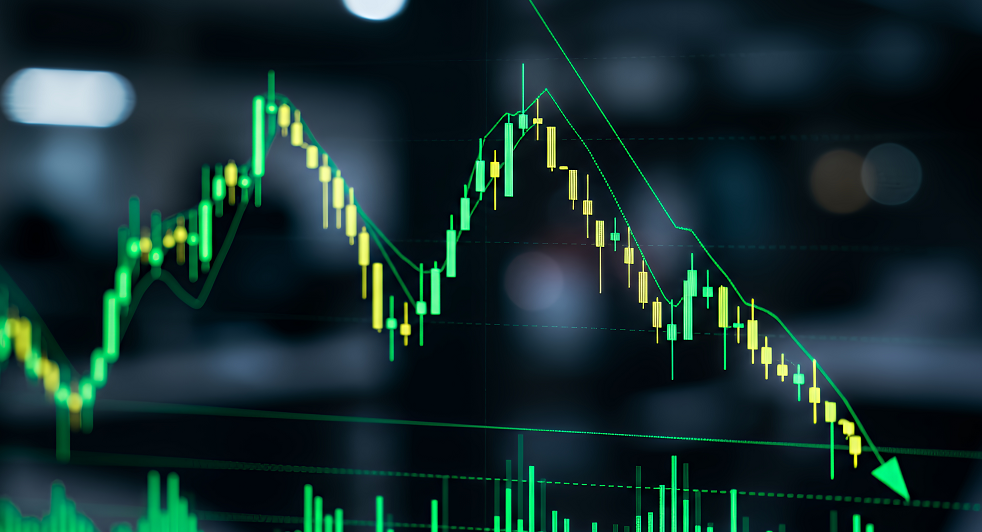IC Trading Asia Fundamental Forecast | 13 August 2025
What happened in the U.S session?
The U.S. session overnight was dominated by the CPI release and tariff truce headlines. Equities and crypto rallied, bonds steepened, the dollar weakened, and commodities saw mixed performance as traders positioned for Federal Reserve rate cuts and fewer trade tensions. The Consumer Price Index (CPI) for July landed almost exactly in line with expectations, showing a month-over-month inflation rise of 0.2% and year-over-year at 2.7%. Core CPI (excludes food/energy) came in at 0.3% MoM and 3.1% YoY, a modest uptick from June.
What does it mean for the Asia sessions?
Asian traders should pay particular attention to Australia’s wage figures for central bank guidance and China’s loan data/policy announcements for clues about economic direction and stimulus effectiveness. The Wage Price Index (WPI) reports are closely watched as they influence inflation expectations and the Reserve Bank of Australia’s (RBA) rate decisions. This quarter’s expected softening in wage growth could reduce urgency for further rate hikes and impact the Australian dollar.
The Dollar Index (DXY)
Key news events today
No major news event
What can we expect from DXY today?
The US Dollar resumed its decline after two consecutive days of gains. This shift follows investor reactions to the latest Consumer Price Index (CPI) readings, increasing speculation over two Federal Reserve interest rate cuts expected later in the year. Core CPI rose 0.3% month-over-month, pushing the annual rate to 3.1% (up from 2.9%). The headline inflation rate was 2.7% year-over-year, matching expectations. Investors are closely watching whether elevated inflation persists, particularly as softer July payroll data and reports of rising prices have sparked renewed stagflation concerns.
Central Bank Notes:
- The Board of Governors of the Federal Reserve System voted unanimously to maintain the Federal Funds Rate in a target range of 4.25% to 4.50% at its meeting on July 29–30, 2025, keeping policy unchanged for the fifth consecutive meeting.
- The Committee reiterated its objective of achieving maximum employment and inflation at the rate of 2% over the longer run. While uncertainty around the economic outlook has diminished since earlier in the year, the Committee notes that challenges remain and continued vigilance is warranted.
- Policymakers remain highly attentive to risks on both sides of their dual mandate. The unemployment rate remains low, near 4.2%–4.5%, and labor market conditions are described as solid. However, inflation is still somewhat elevated, with the PCE price index at 2.6% and core inflation forecast at 3.1% for year-end 2025, up from earlier projections; tariff-related pressures are cited as a contributing factor.
- The Committee acknowledged that recent economic activity has expanded at a solid pace, with second-quarter annualized growth estimates near 2.4%. However, GDP growth for 2025 has been revised downward to 1.4% (from 1.7% projected in March), reflecting expectations of a slowdown in the coming quarters.
- In the revised Summary of Economic Projections, the unemployment rate is expected to average 4.5% in 2025, and headline PCE inflation is forecast at 3.0% for the year, with core PCE at 3.1%. Policymakers continue to anticipate that inflation will moderate gradually, with ongoing risks from tariffs and global conditions.
- The Committee reaffirmed its data-dependent and risk-aware approach to future policy decisions. Officials stated they are prepared to adjust the stance of monetary policy as appropriate if risks emerge that could impede progress toward the Fed’s goals.
- As previously outlined, the Committee continues the measured run-off of its securities holdings. The pace of balance sheet reduction, which slowed since April (monthly redemption cap on Treasury securities reduced from $25B to $5B, while holding agency MBS cap steady at $35B), was left unchanged this month to support orderly market functioning and financial conditions.
- The next meeting is scheduled for 16 to 17 September 2025.
Next 24 Hours Bias
Medium Bearish
Gold (XAU)
Key news events today
No major news event
What can we expect from Gold today?
Gold prices today are consolidating after last week’s spike, with trade and tariff news driving volatility. The short-term trend remains bearish as safe-haven flows retreat, and both technical and forecast indicators suggest prices may soften further absent renewed geopolitical tension or central bank buying. Gold prices have been fluctuating between $3,341 and $3,402 per ounce, with recent trades generally weaker following Monday and Tuesday’s dollar rally. On August 12, spot gold was trading near $3,345, down 1.53% for the day.
Next 24 Hours Bias
Medium Bullish
The Australian Dollar (AUD)
Key news events today
Wage price index q/q (1:30 am GMT)
What can we expect from AUD today?
The AUD remains weak and volatile, pressured by softer economic data and interest rate cuts. While some short-term rebound is possible, strong resistance at $0.66 makes bullish scenarios difficult without a substantial shift in economic fundamentals or improved global risk sentiment. Analysts expect further gradual AUD depreciation unless there’s a marked improvement in productivity or global trade dynamics. On August 12, the RBA lowered its official cash rate by 25 basis points to 3.60%, the third cut of the year. The central bank cited easing inflation and a softening labor market, projecting inflation to move closer to its 2%-3% target range.
Central Bank Notes:
- The RBA held its cash rate steady at 3.85% at the July meeting on 8 July 2025, following a 25bps reduction in May and in line with widespread market expectations after recent data showed inflation tracking within the target band.
- Inflation continues to ease from its peak, with higher interest rates helping to rebalance demand and supply across the Australian economy. Data for the June quarter signaled ongoing progress, though underlying pressures persist in certain sectors.
- Trimmed mean inflation for the June quarter likely remained near 2.9% and headline CPI around 2.4%, both within the RBA’s 2–3% target range. The Board noted further evidence of inflation convergence, but flagged that not all price categories are moving in tandem.
- Financial markets have shown increased volatility in the wake of global tariff and trade policy developments—especially as a result of recent U.S. and EU announcements. This has pushed asset prices higher but contributed to an uncertain outlook for domestic growth and employment.
- Private domestic demand showed a tentative recovery. Real household incomes improved and signs of easing household financial stress emerged, but some business sectors continued to face subdued demand, limiting their ability to pass on cost increases.
- Labour market conditions remained tight overall. Employment continued to expand, with low rates of underutilization. Business surveys suggest labour availability remains a constraint, though there are signs of a gradual easing compared to earlier in 2025.
- Underlying wage growth softened modestly, though unit labour cost growth remains elevated due to below-trend productivity gains. The Board remains attentive to developments in wage and productivity dynamics as cost pressures continue to evolve.
- Uncertainties persist for both domestic activity and inflation. Consumption growth has risen, but more slowly than anticipated three months ago, with global and domestic factors both contributing to the cautious outlook.
- There remains a risk that household spending picks up more slowly than forecast, which could result in ongoing subdued aggregate demand and a sharper deterioration in employment conditions.
- Given that inflation is expected to remain around the target band, the Board judged that it was appropriate to keep policy settings unchanged in July, maintaining a position that is still mildly restrictive.
- The Board continues to monitor all incoming data and assesses risks carefully, with a focus on global trends, domestic demand indicators, inflation outcomes, and the labour market outlook.
- The RBA remains committed to its mandate of price stability and full employment and stands ready to adjust policy as needed to achieve these objectives.
- The next meeting is on 11 to 12 August 2025.
Next 24 Hours Bias
Weak Bullish
The Kiwi Dollar (NZD)
Key news events today
No major news event
What can we expect from NZD today?
The New Zealand Dollar is trading steadily ahead of anticipated policy action from the RBNZ. Inflation expectations are slightly lower, and a rate cut is considered likely by observers. The NZD is fluctuating in a narrow range amid market caution, with technical and global factors like US Dollar trends and commodity prices impacting short-term movement.Q3 inflation expectations for New Zealand businesses have ticked lower—two-year expectations fell slightly to 2.28% (from 2.29% in Q2). One-year expectations dipped to 2.37% (from 2.41%). Both figures are well within the Reserve Bank of New Zealand (RBNZ) target band of 1%-3%
Central Bank Notes:
- The Monetary Policy Committee (MPC) agreed to hold the Official Cash Rate (OCR) at 3.25% on 9 July, marking the first pause following six consecutive rate cuts.
- The MPC cited heightened uncertainty and near-term inflation risks as reasons to wait until August for further action.
- Although the annual consumer price index inflation increased to 2.5% in the first quarter of 2025, it remained within the MPC’s target range of 1 to 3%, noting that the outlook for medium-term inflation pressures has evolved broadly in line with the May MPS projections.
- While it is expected to be near the upper end of the band in the second and third quarters of this year, easing core inflation and spare capacity in the economy should help return it toward the 2% midpoint over time.
- The MPC noted that, despite global factors, domestic financial conditions are evolving broadly as expected, as mortgage and deposit interest rates have continued to decline, reflecting a lower OCR, strong bank liquidity, and soft credit growth.
- In aggregate, GDP growth over the December and March quarters was stronger than expected, reflecting a pickup in household consumption and business investment. However, higher-frequency indicators suggest weaker-than-expected growth in April and May.
- Large economic policy shifts overseas and concerns about sovereign risk could result in additional financial market volatility and increased bond yields, while prolonged economic uncertainty might induce further precautionary behaviour by households and firms, slowing the domestic economic recovery.
- Subject to medium-term inflation pressures continuing to ease in line with the Committee’s central projections, the Committee expects to lower the OCR further, broadly consistent with the projection outlined in May.
- The next meeting is on 20 August 2025.
Next 24 Hours Bias
Weak Bearish
The Japanese Yen (JPY)
Key news events today
No major news event
What can we expect from JPY today?
The Japanese yen begins August 13 under moderate pressure, with exchange rates stable but at the lower end of their recent range. Political uncertainty and bond market jitters driven by a major government note issuance and speculation over leadership are the main storylines, while economic data releases such as the PPI and GDP later in the week could give further direction to the yen’s next moves.
Japan’s Ministry of Finance is set to issue ¥2.40 trillion in 5-year government notes today, a move that comes amid heightened political uncertainty—including speculation over Prime Minister Shigeru Ishiba’s potential resignation. Investors expect this issuance to impact yields and signal the country’s fiscal outlook, especially as recent wage growth has fueled speculation of a possible Bank of Japan rate hike soon.
Central Bank Notes:
- The Policy Board of the Bank of Japan decided on 31 July, by a unanimous vote, to set the following guidelines for money market operations for the inter-meeting period:
- The Bank will encourage the uncollateralized overnight call rate to remain at around 0.5%.
- The BOJ will maintain its gradual reduction of monthly outright purchases of Japanese Government Bonds (JGBs). The scheduled amount of long-term government bond purchases will, in principle, continue to decrease by about ¥400 billion each quarter from January to March 2026, and by about ¥200 billion each quarter from April to June 2026 onward, targeting a purchase level near ¥2 trillion in January to March 2027.
- Japan’s economy is experiencing a moderate recovery overall, though some sectors remain sluggish. Overseas economies are generally growing moderately, but recent trade policies in major economies have introduced pockets of weakness. Exports and industrial production in Japan are essentially flat, with any uptick largely driven by front-loaded demand ahead of U.S. tariff increases.
- On the price front, the year-on-year rate of change in consumer prices (excluding fresh food) remains in the mid-3% range. This reflects continued wage pass-through, previous import cost surges, and further increases in food prices, particularly rice. Expectations for future inflation have begun to rise moderately.
- The effects of the earlier import price and food cost increases are expected to fade during the outlook period. There may be a temporary stagnation in core inflation as overall growth momentum softens.
- Looking forward, the economy is likely to see a slower growth pace in the near term as overseas economies feel the pinch of ongoing global trade policies, putting downward pressure on Japanese corporate profits. Accommodative financial conditions are expected to buffer these headwinds somewhat. In the medium term, as global growth recovers, Japan’s growth rate is also expected to improve.
- With renewed economic expansion, intensifying labor shortages, and a steady rise in medium- to long-term expected inflation rates, core inflation is projected to gradually pick up. By the latter half of the BOJ’s projection period, inflation is forecast to move in line with the 2% price stability target.
- There are multiple risks to the outlook, with especially elevated uncertainty regarding the future path of global trade policies and overseas price trends. The BOJ will continue to closely monitor their impact on financial and foreign exchange markets, as well as on Japan’s economy and inflation.
- The next meeting is scheduled for 17 to 18 September 2025.
Next 24 Hours Bias
Medium Bearish
Oil
Key news events today
EIA Crude Oil Inventories (2:30 pm GMT)
What can we expect from Oil today?
Oil prices continue to drift lower amid signs of oversupply, subdued demand forecasts, and significant economic data awaited from EIA and IEA reports today. Key geopolitical events and OPEC+ production realities are adding volatility and uncertainty to near-term pricing, while traders watch inventory trends and U.S.–Russia negotiations for further market direction. Oil prices are on a downward trajectory, with Brent crude trading below $66/bbl in recent sessions and West Texas Intermediate (WTI) around $63/bbl. The market is experiencing a period of minimal upside, tempered by U.S.-China tariff uncertainties and potential diplomatic breakthroughs on the Ukraine conflict.
Next 24 Hours Bias
Strong Bearish





